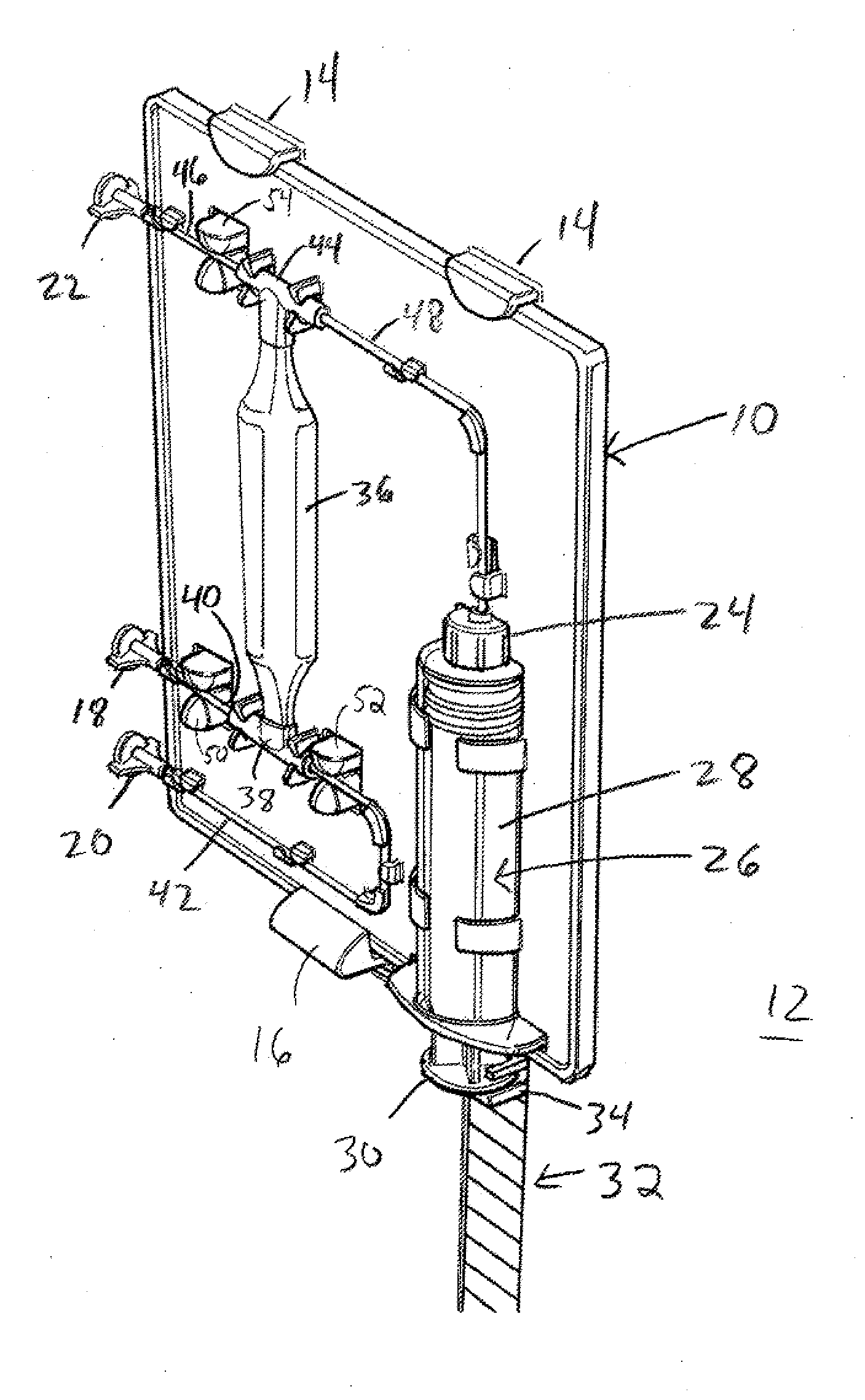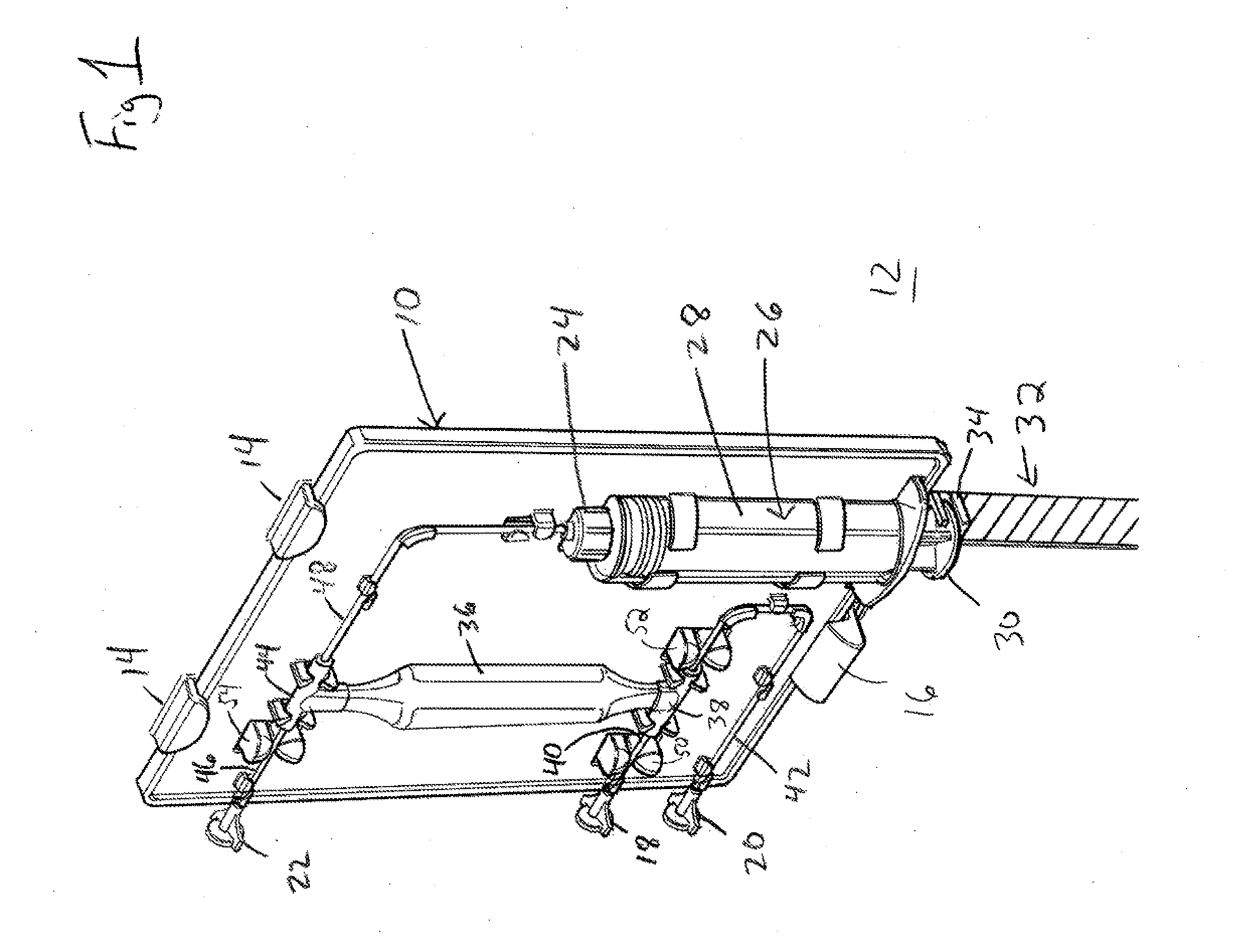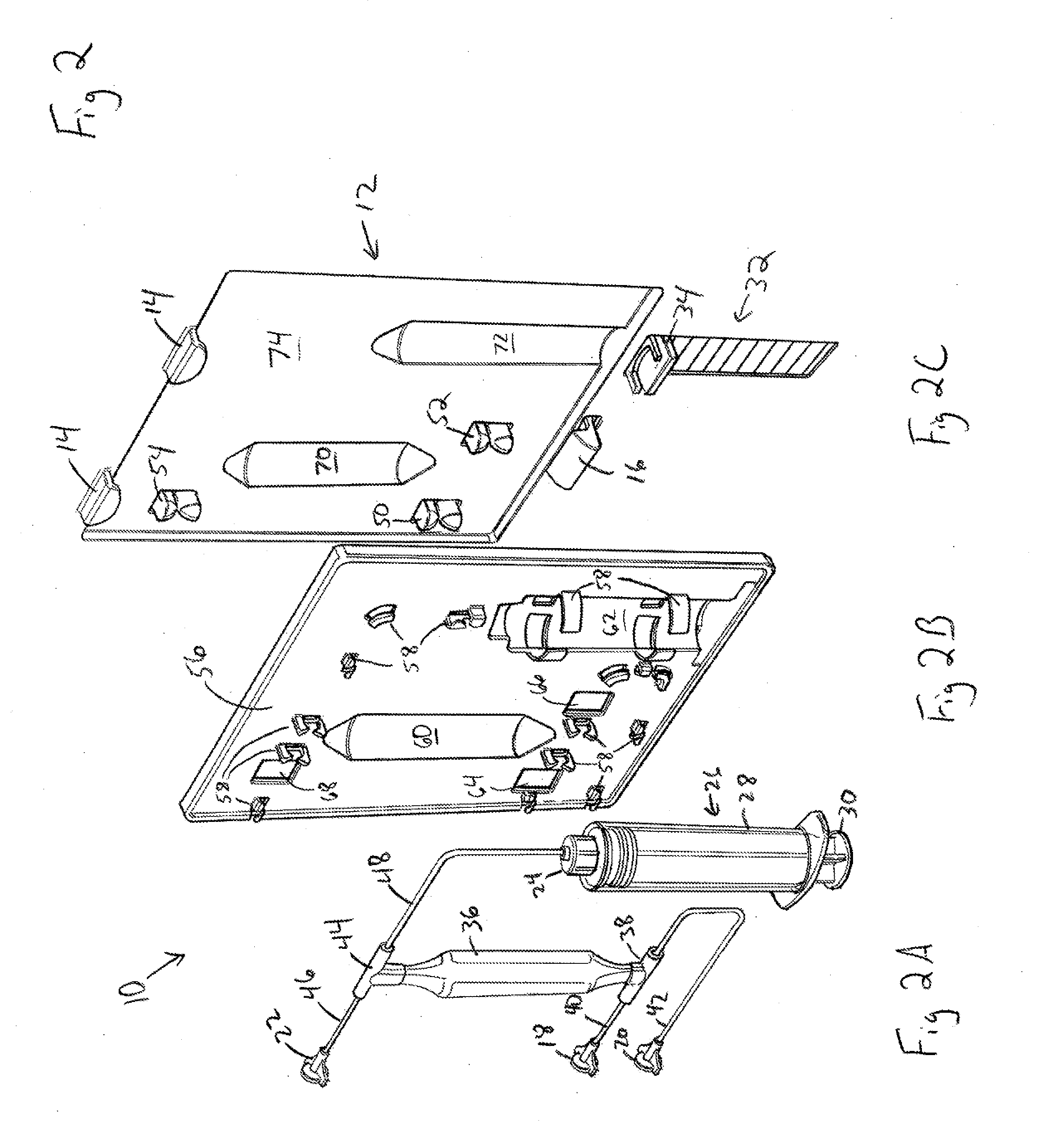Cartridge for automated blood sampling system
- Summary
- Abstract
- Description
- Claims
- Application Information
AI Technical Summary
Benefits of technology
Problems solved by technology
Method used
Image
Examples
Example
DETAILED DESCRIPTION OF THE DRAWINGS
[0022]The embodiments disclosed below are not intended to be exhaustive or to limit the invention to the precise forms disclosed in the following detailed description. Rather, the embodiments are chosen and described so that others skilled in the art may utilize their teachings. While the present disclosure is primarily directed to a portable sample or testing device for intensive care medicine, pharmacokinetics and physiology studies, it should be understood that the features disclosed herein may have application to collection of other types of samples.
[0023]Referring to FIG. 1, an illustrative ABS cartridge 10 is shown attached to a portion of an ABS apparatus 12. In one exemplary embodiment, cartridge 10 is attached to ABS apparatus 12 using hooks 14 and latch 16. In the illustrated embodiment, cartridge 10 is inserted into hooks 14, latch 16 is depressed, cartridge 10 is pushed in toward ABS apparatus 12 and latch 16 snaps into position. In an...
PUM
 Login to View More
Login to View More Abstract
Description
Claims
Application Information
 Login to View More
Login to View More - R&D
- Intellectual Property
- Life Sciences
- Materials
- Tech Scout
- Unparalleled Data Quality
- Higher Quality Content
- 60% Fewer Hallucinations
Browse by: Latest US Patents, China's latest patents, Technical Efficacy Thesaurus, Application Domain, Technology Topic, Popular Technical Reports.
© 2025 PatSnap. All rights reserved.Legal|Privacy policy|Modern Slavery Act Transparency Statement|Sitemap|About US| Contact US: help@patsnap.com



